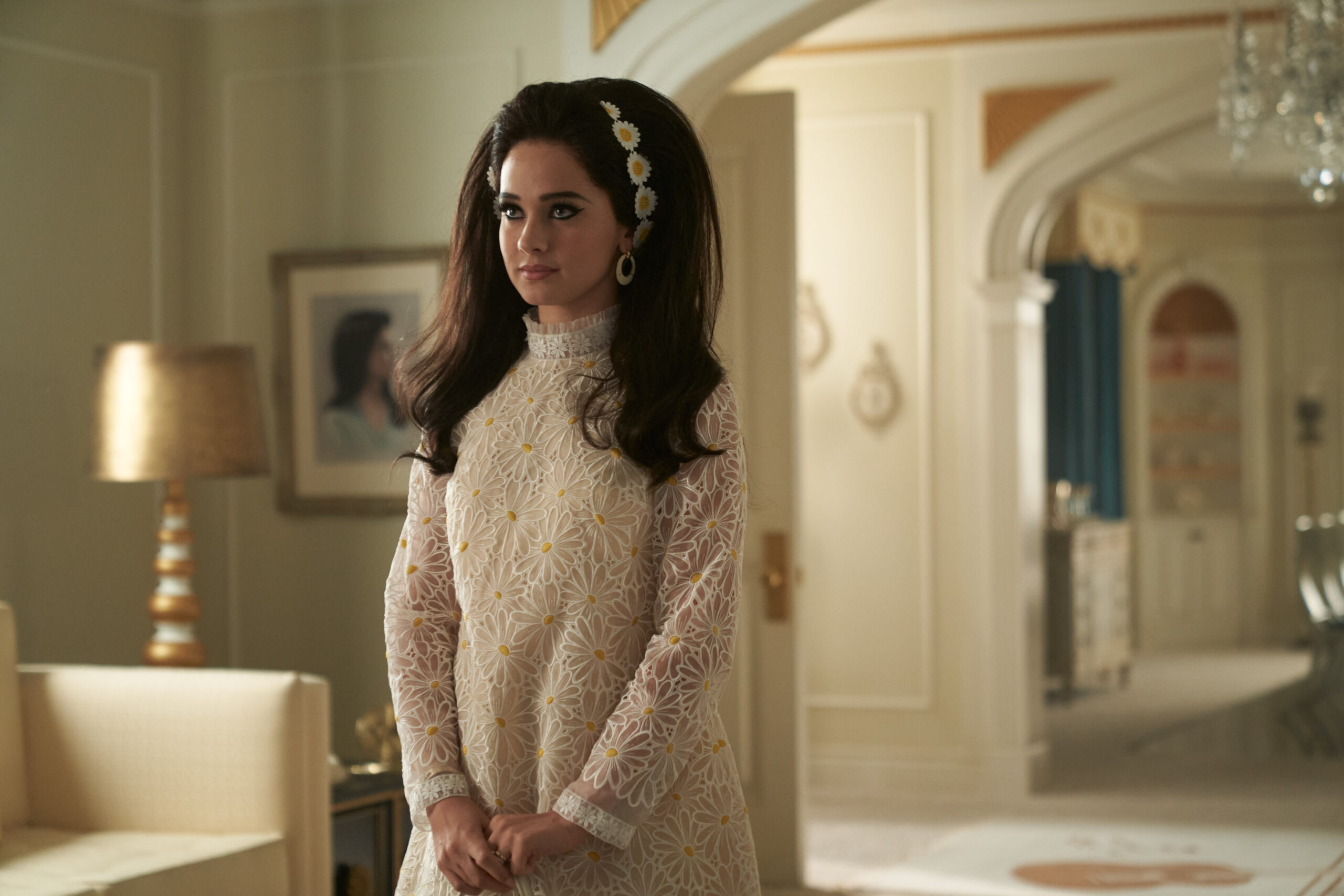From her 25-year coming-of-age friendship with Kirsten Dunst to an unbreakable bond with Bill Murray, Sofia Coppola’s creative collaborations often extend well beyond the confines of filmmaking. For over two decades, Coppola and her trusted costume designer, Stacey Battat, have cultivated a partnership steeped in mutual respect and artistic synergy. Their journey began in New York City, where Battat—then working at the Marc Jacobs store—struck up a friendship with Coppola, their encounters marked by shared cigarettes and candid conversations. Little did they know then, their chance connection would blossom into a creative alliance that would shape the visual landscape of Coppola’s cinematic universe.
With no prior experience in film costuming, Battat embarked on her maiden voyage with Somewhere, setting the stage for a series of collaborative ventures that would see her crafting sartorial narratives for five of Coppola’s cult classics, from the corseted frills of The Beguiled to the noughties excess of The Bling Ring. Now, as the creative force behind the plush, pastel-shaded world of Priscilla (available to stream now exclusively on MUBI), Battat continues to weave her magic, infusing the film’s aesthetic with a blend of nostalgia and modern allure.
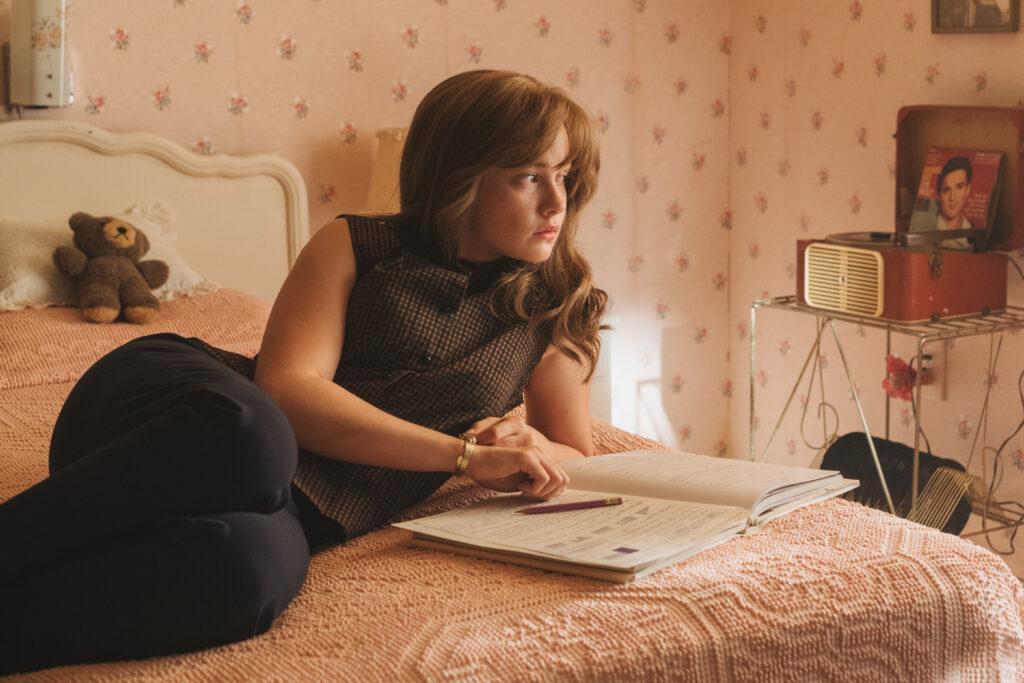
Priscilla traces the enigmatic journey of Priscilla Beaulieu Presley, portrayed by a shrewdly cast Cailee Spaeny (and Jacob Elordi as The King). The film charts Priscilla’s transformation from a wide-eyed teen fan to the wife of the most desired man in 1960s America. Against the backdrop of the couple’s tumultuous marriage, Battat’s meticulous attention to detail breathes life into each character, with a staggering 120 specially-crafted costumes for Priscilla alone. From the opulent glamour of Chanel to the allure of independent labels like Eòlas, Battat’s wardrobe choices mirror Priscilla’s evolution from adolescence to womanhood, as she grapples with life in and out of the limelight.
In Coppola’s signature style, Priscilla transcends the confines of traditional biopics, eschewing trite caricatures in favour of a more nuanced and gestural approach to storytelling. Through evocative scenes of romance, loneliness, and abuses of power, Coppola invites audiences to navigate the labyrinthine corridors of Graceland, where dreams and disillusionment collide.
As Battat reflects on her creative journey with Coppola, she speaks of a warm and collaborative energy on set, where each department head is given the freedom to imbue their craft with a sense of authenticity and purpose. Amidst the whirlwind of production—with filming completed in just 30 days—their shared vision finds expression in every meticulously crafted costume.
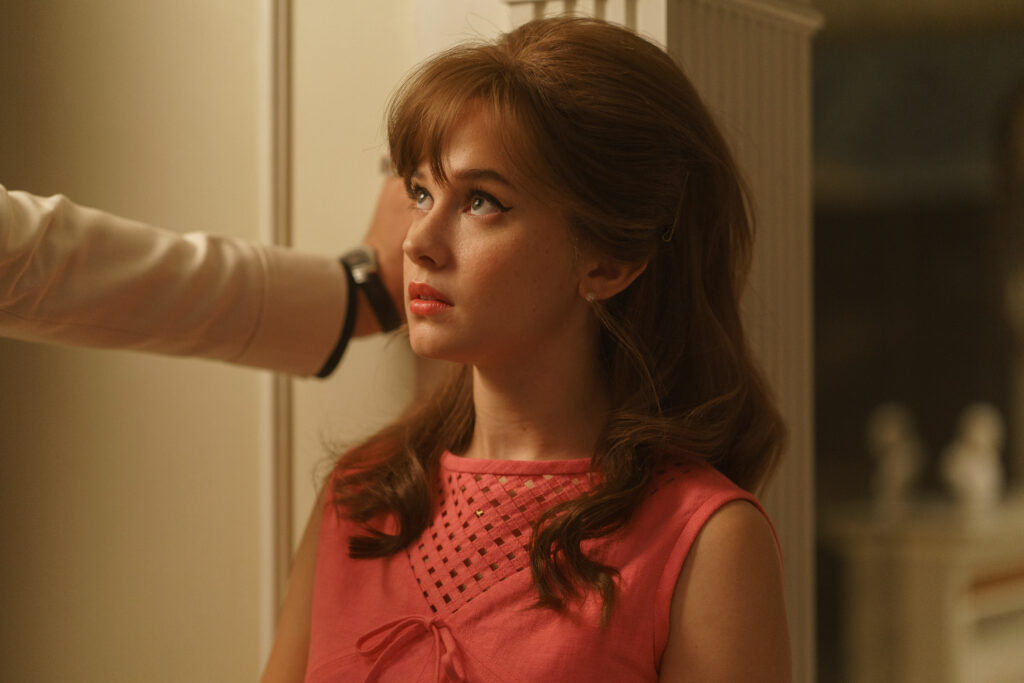
Priscilla is obviously biographical, but it’s also much more than a period piece, as it spans the ‘50s, ‘60s and ‘70s. If you had to choose 3 adjectives to describe each ‘era’ of Priscilla’s style, what would they be?
In the ’50s, I’d say she’s childish. In the early ’60s, I’d say she’s curious. By the mid to late ’60s, I’d say she’s questioning, and in the ’70s, I’d say she’s liberated.
Was there any image that you found of Priscilla that was a revelation? Was there anything that you were surprised by?
Yes! There was a family photo of her and her mom in like 1964, where she had blonde hair. It’s so hard to imagine, but it happened. Our hair stylist, Cleona, found it, and she really wanted to make the hair blonde, but we obviously didn’t…
I know the film was shot in just 30 days. Are you used to working with those kind of time limitations or was it especially short…?
It’s especially short for what we accomplished, and I do think It would be really hard to do that with anyone else. The thing about Sofia is that I really do feel confident that I know what she’s gonna like. And like, we’re not like approving costumes—there’s not like a big guy. Sometimes things have to go through a million people—but there’s not this feedback loop. It’s really between the two of us.
How many looks did you have in total?
About 120 for Priscilla, 90 for Elvis, countless for the Memphis mafia and everybody else—a lot. We made a lot of Priscilla’s and Elvis’s, and we also had a tailor out of house. We obviously had the help of Valentino and Chanel, we had all the suits made in Los Angeles, like we were spread out, but it’s still a lot to accomplish.
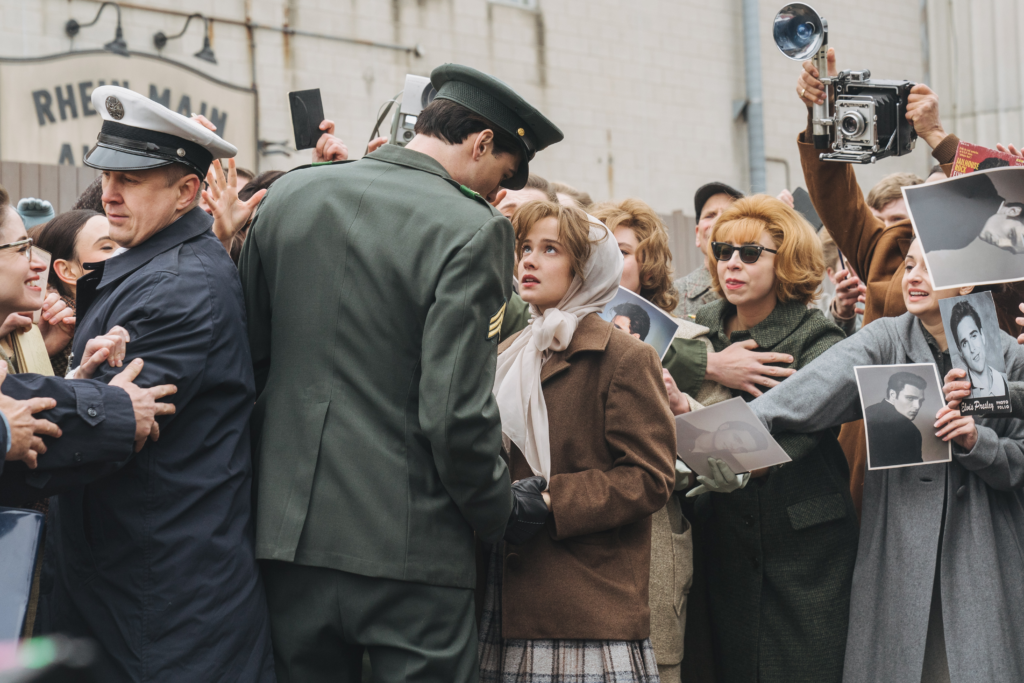
Early on in the film, we see Priscilla wearing shoes that are clumsily too big for her—like she’s cosplaying this adult woman she wants to be…
Are you talking about those green shoes with the daisy chains? I love those shoes. That was a little bit of an accident. So my friend Fabrizio makes those shoes—he designs shoes for Louis Vuitton. He made those shoes and sent them, but they were a little too big for Cailee, but we both really just loved them and she was like, “I can make it work. This is fine.” But it was a happy accident.
How did you approach the colour palette for each era of the film?
Sofia had said to me at some point, “I want it to feel sad in Germany, and then the sun comes out in Memphis.” And it’s funny—I know exactly what she means when she says that, and that’s why it’s so nice to work with her. From that, I just made us a colour palette. It was much more pastels in the early part, and then later it got brighter. The brightness and saturation of the colours really was based on things that Priscilla wore and colours I found in magazines, and same with the ‘70s—like those purples and the brighter colours.
Priscilla’s wardrobe obviously reflected various influences and trends throughout her life—we see her in Hollywood glamour and bohemian chic. Which do you personally imagine is closest to Priscilla’s truest essence?
I think in our story, I imagined her more herself when she was in pants, but like, that’s just a fabrication. I think [Elvis] had this vision of Priscilla and he moulded her to be his ideal woman, and when he was away, she wore simpler clothes. In our movie, she wore pants and stuff like that. I don’t know if she really did wear simpler clothes when he was away. I mean pants were obviously a thing in the ‘70s for women, but later, when she leaves him, she’s also wearing pants. I’m going to go with pants that’s out of my imagination. It’s not based on any factual evidence.
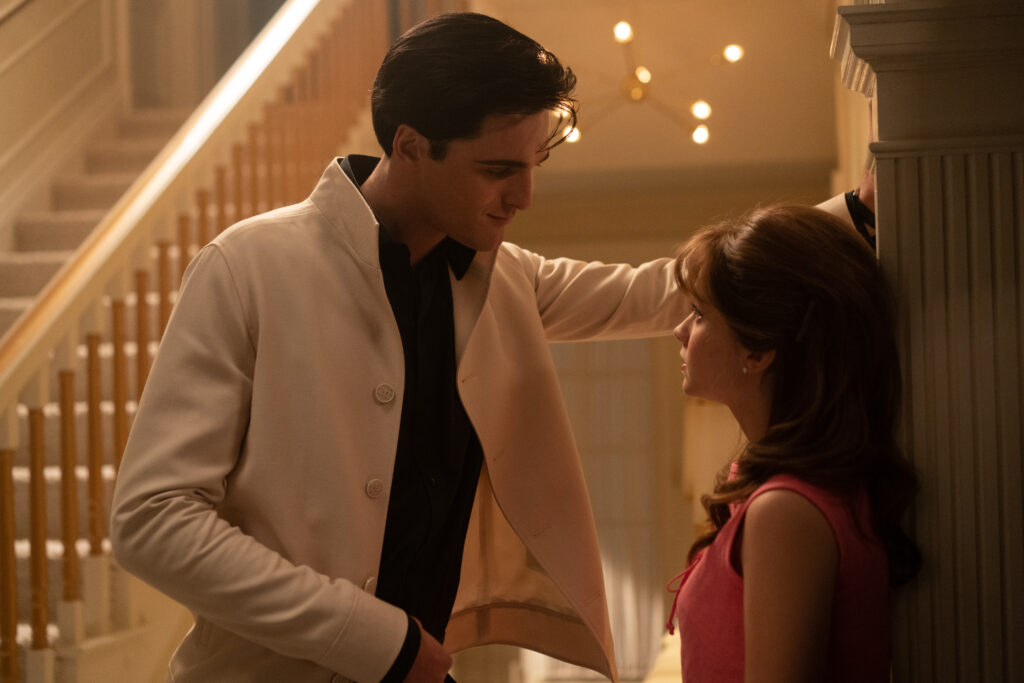
That makeover scene after Priscilla arrives to Graceland is where we really first see Elvis’ power and control over her appearance. He disparages her in brown, and reveals his favourite colour is blue. Was that factual?
That was factual. He did like blue, he did not like prints or brown, so that was based on reality. She wore a lot of blue in part because he liked it. But also, those were some of the fabrics that I was able to find that felt appropriate for that era, because fabric has changed a lot…
She wears prints later in the film, do you see that as being in defiance of him?
When she wears a print in Los Angeles, that moment to me was rebellious—she was mad at him and she wore it. But actually, it was very important to me—and to the storytelling—that when she leaves him she’s not reactive towards what he likes and doesn’t like. It’s about her finally discovering what it is that she likes. So she’s not wearing prints all the time in the late ‘70s, she’s experimenting with what it is that makes her happy and who she is. It’s important to me that it never came off as a reaction.
Can you talk a bit about crafting the Las Vegas looks? It’s the first public outing together that we’re shown, in this sophisticated and high-octane environment.
I remember actually having a meeting with Sofia at her kitchen table a while back. I had been doing some research and came across this airline ad where they were wearing one shoulder dresses. It was weird, because I never would have thought of that for the time. There’s something very unexpected about it, but it also just feels more adult—like it’s an easy way to transition or into an adult for that moment. Originally we had a scene where Elvis took her shopping in Vegas, but we cut it for budgetary reasons. Still, I imagine that he took her shopping. So when she left Vegas, she had this two-piece midriff-bearing outfit with a fluffy skirt, that our tailor Ahmed made. I felt it was a nice way to transition—or like that she was still a kid kind of, but yeah.
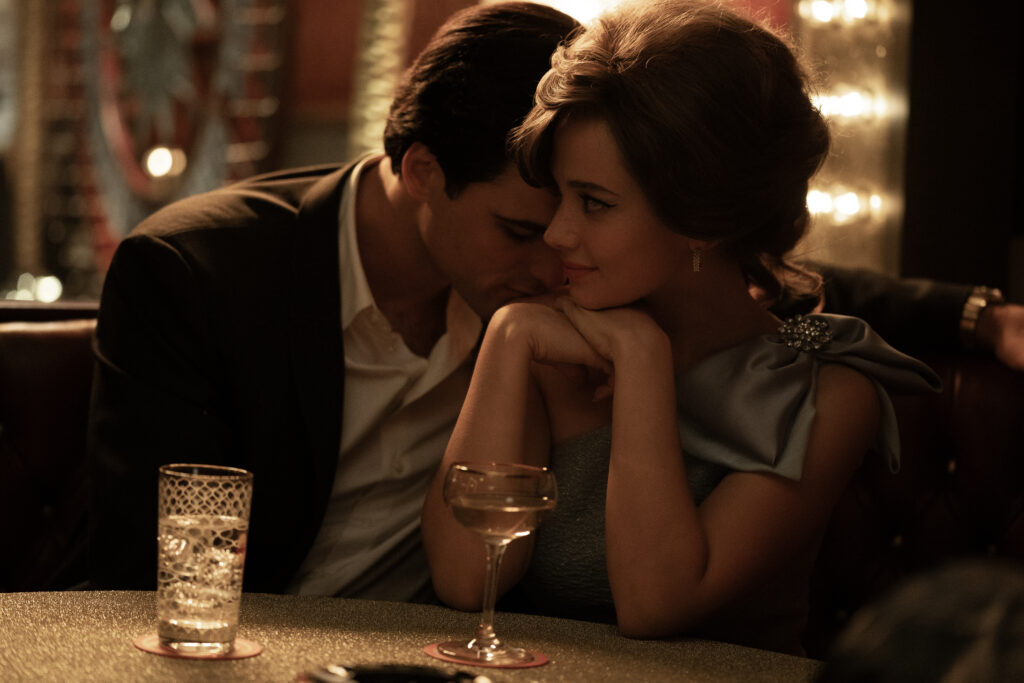
There’s then this moment when Priscilla gets off the plane in Germany after visiting Elvis, and sees her parents, and they just look completely aghast. It’s pertinent, but obviously humorous.
The hair and makeup obviously helped with the humorous part. Hair and makeup is a huge part of costume too, I should say. And Cleona and Joe were incredible and very collaborative. I think the three of us really work together to kind of take her from child to adult and, in that scene, for example, she still looked kind of like a doll in this pristine outfit that he bought for her, or maybe her mom bought for her. We wanted her to still seem like Priscilla, but just a little messy, like she’d been crying on the plane.
In the film we see Priscilla navigate moments of isolation and loneliness, and there’s this constant dichotomy between not only interior vs exterior self, but also Priscilla with Elvis and without Elvis. How was this to play with? How did you use clothing to emphasise the public and private Priscilla?
I know this secondhand from Priscilla, but they never left their bedroom not fully dressed. So that is something I knew—even when they were at home, they were always fully dressed. And really, our movie doesn’t have a lot of Priscilla in public without Elvis. She was kind of hidden away until they got married. And they had two weddings, one in Vegas for the press, and then they recreated it in Memphis for their friends and family, which is very strange. I mean, to a certain extent they belong to the public. I think you see that when she’s putting her makeup on before she goes to have her baby—she goes to deliver the baby in go-go boots. When she comes out of the hospital, there’s cameras there and her hair’s done. I guess that’s the public part of them, right? That they belong to the public. And then the private part of them is who they were when they were behind closed doors. I think for her, she was always his ideal. And when I think of what he wore at home, I imagine he wasn’t how the public saw him; he wore reading glasses in bed, he was softer and cosier—and elegant still, but not so showy.
And we obviously also see him grappling with his image and becoming self conscious—we see those moments of him at home as well.
Exactly.
What do you see as the height of Elvis and Priscilla’s iconography of the “power couple”—what is that image for you?
I think that’s the wedding. It’s iconic. And I think everything falls apart when he’s wearing that blue suit and she’s got the lavender shirt on. In the real photo of them, they just seem so uncomfortable—she just seems like she doesn’t want to be there. That’s also when he’s starting the Vegas stuff, and he’s growing more and more decorated, and she’s paring down.
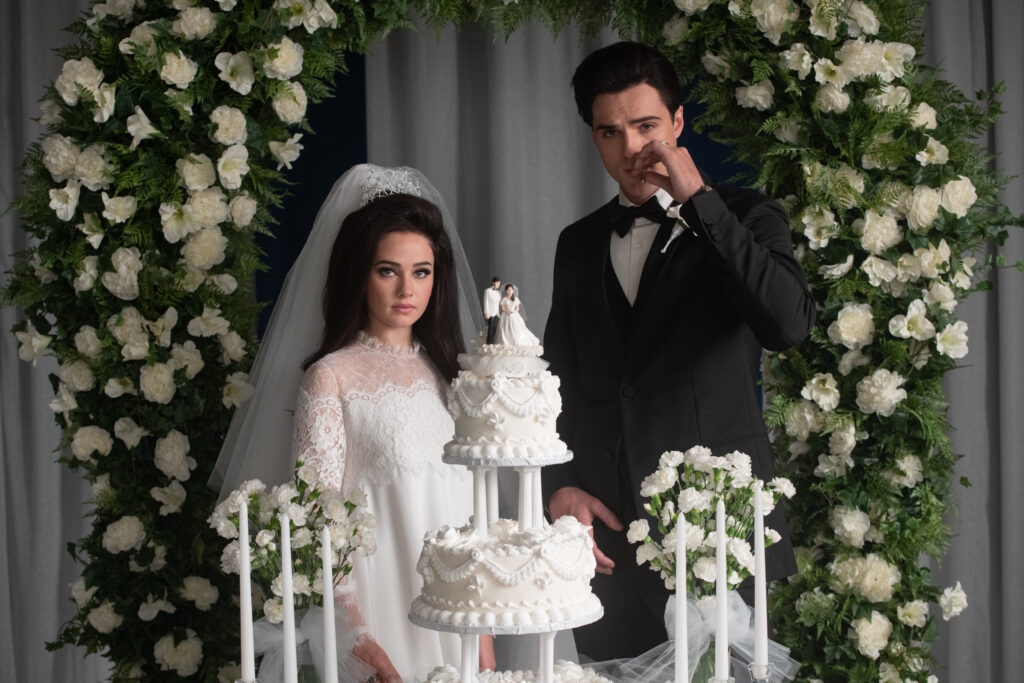
As far as I understand, you didn’t work directly with the real Priscilla—you kind of asked for things through Sofia…
I would have been happy to talk to her. I think it’s just we wanted to give her space. In the same way that like my assistant doesn’t walk into Sofia’s office and say like, “I have a question about the background here.” So we would just make a list of the questions that we might have, and then ask her all at the same time…
It’s obviously also important to have creative freedom in order to develop Sofia’s character, and who Priscilla is in the context of this film. What were the kinds of things that were important for you to align on?
I wanted to know when she stopped wearing stockings, that was important to me. In 1959, no woman would be seen not wearing stockings, but then, by mid to late ‘60s, it would be very conservative for someone of her age to wear stockings. So I think I just wanted to figure out that transition.
I know you’ve said that every time you’re asked about your favourite look the answer changes, but as of now, what would that be?
Her school uniform. That’s been my answer for a little while now. It was a bit of a happy accident—the fabric was very inexpensive, and that’s kind of why we ended up using it. I had those skirts made and I’m at a theatre in New York. And at the end of the day, that kind of colour. I feel like the skirt and the costume was very ordinary, but that colour was a little bit otherworldly. And I think that was very indicative of what her experience was. It was kind of ordinary, but it was happening in this very heightened otherworldly world.
This conversation has been edited for length and clarity.
Stream Priscilla now on MUBI.
